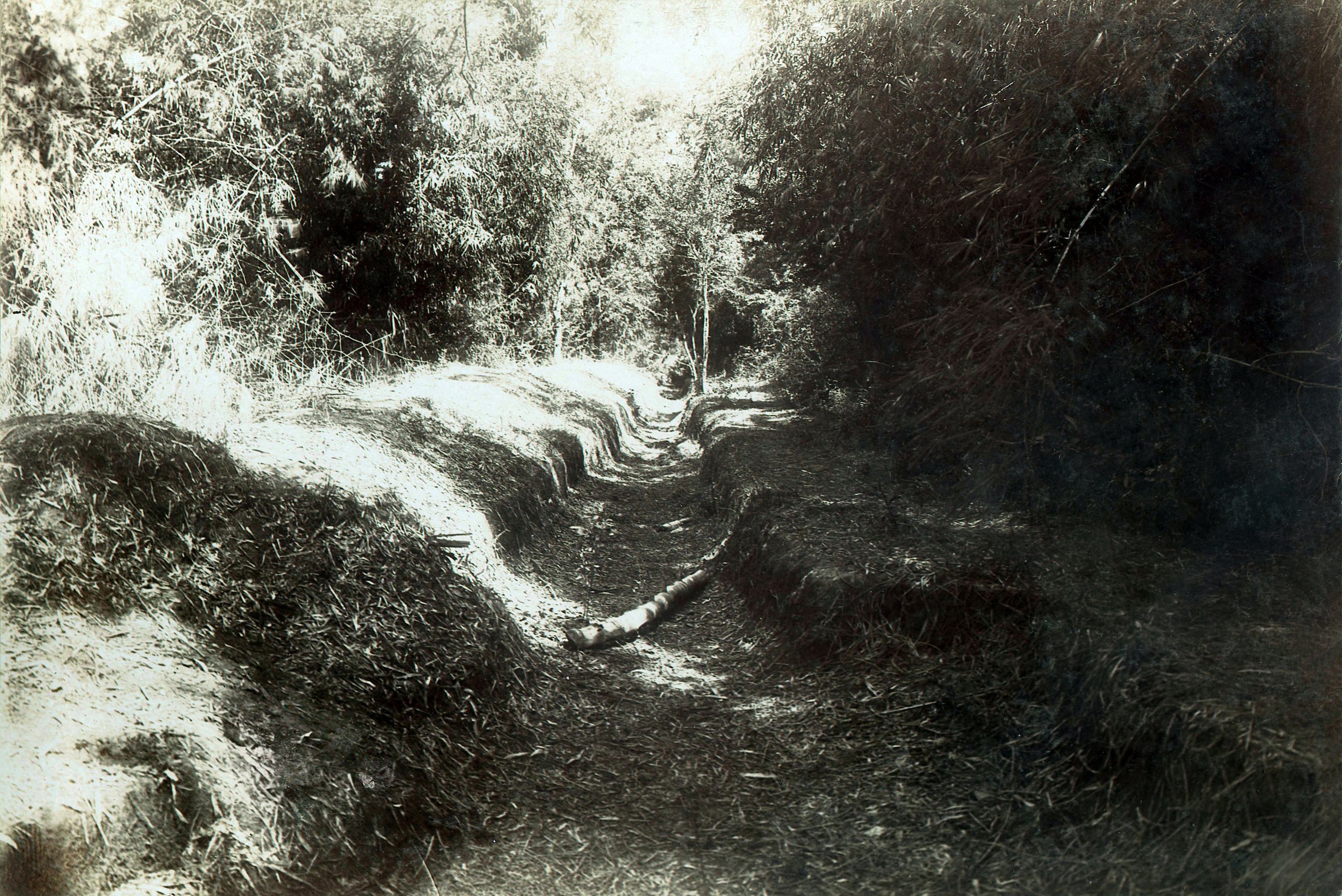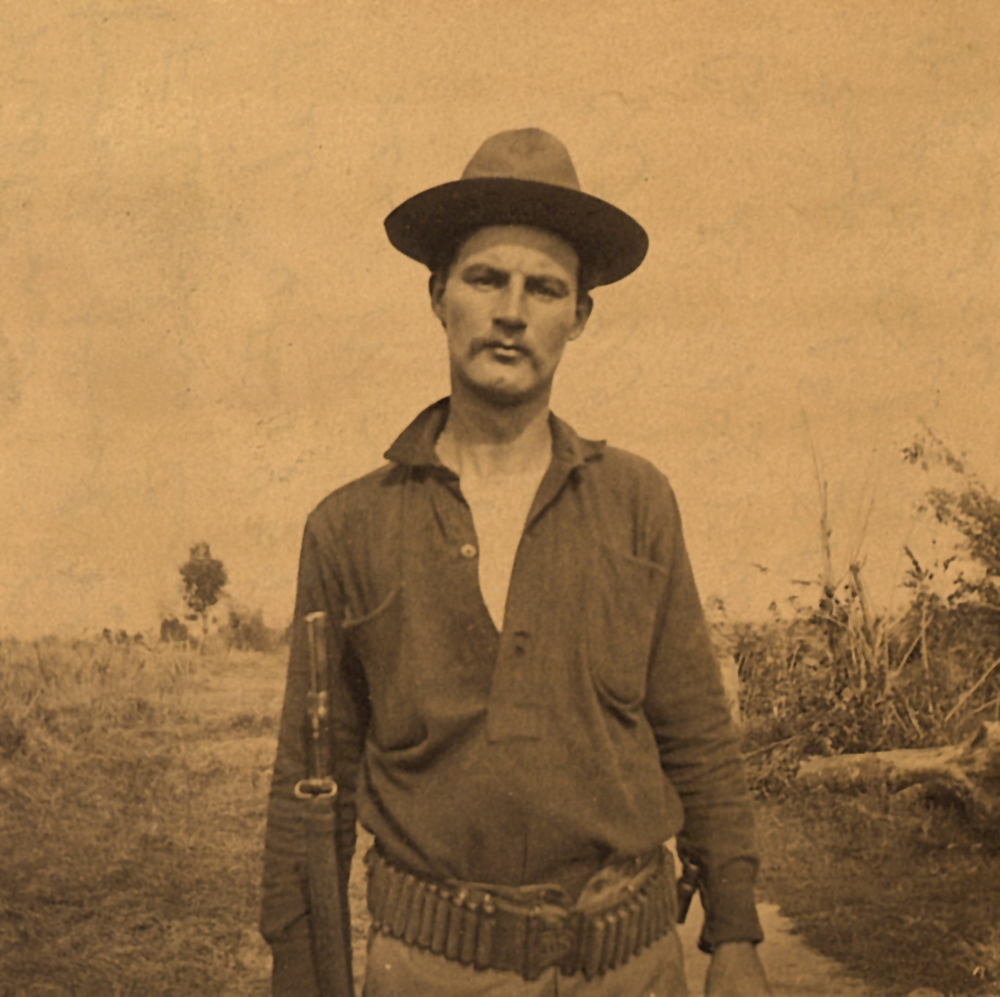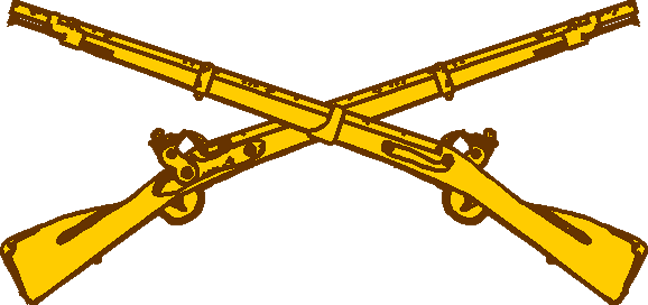|
Samuel Ovenshine
Samuel Ovenshine (April 2, 1843 – July 5, 1932) was a United States Army officer who served as a brigadier general during the Philippine–American War. Biography Ovenshine was born on April 2, 1843 in Philadelphia. He was studying to become a lawyer when he was interrupted by the outbreak of the Civil War. On September 25, 1861 he was appointed first lieutenant in the 5th Infantry Regiment (United States), 5th U.S. Infantry Regiment. He served in Kansas and New Mexico and ended the war as a captain. Ovenshine stayed with the 5th U.S. during the Indian Wars. His unit formed the vanguard of Alfred H. Terry's column during the aftermath of the Battle of Little Bighorn and served in Nelson A. Miles' force at the Battle of Bearpaw Mountain. Ovenshine was promoted to major in the 23rd Infantry Regiment (United States), 23rd United States Infantry on July 10, 1885 and commanded the post of Fort Davis National Historic Site, Fort Davis in 1890. He was promoted to lieutenant colonel ... [...More Info...] [...Related Items...] OR: [Wikipedia] [Google] [Baidu] |
Philadelphia
Philadelphia, often called Philly, is the largest city in the Commonwealth of Pennsylvania, the sixth-largest city in the U.S., the second-largest city in both the Northeast megalopolis and Mid-Atlantic regions after New York City. Since 1854, the city has been coextensive with Philadelphia County, the most populous county in Pennsylvania and the urban core of the Delaware Valley, the nation's seventh-largest and one of world's largest metropolitan regions, with 6.245 million residents . The city's population at the 2020 census was 1,603,797, and over 56 million people live within of Philadelphia. Philadelphia was founded in 1682 by William Penn, an English Quaker. The city served as capital of the Pennsylvania Colony during the British colonial era and went on to play a historic and vital role as the central meeting place for the nation's founding fathers whose plans and actions in Philadelphia ultimately inspired the American Revolution and the nation's inde ... [...More Info...] [...Related Items...] OR: [Wikipedia] [Google] [Baidu] |
Alfred H
Alfred may refer to: Arts and entertainment *''Alfred J. Kwak'', Dutch-German-Japanese anime television series * ''Alfred'' (Arne opera), a 1740 masque by Thomas Arne * ''Alfred'' (Dvořák), an 1870 opera by Antonín Dvořák *"Alfred (Interlude)" and "Alfred (Outro)", songs by Eminem from the 2020 album ''Music to Be Murdered By'' Business and organisations * Alfred, a radio station in Shaftesbury, England *Alfred Music, an American music publisher *Alfred University, New York, U.S. *The Alfred Hospital, a hospital in Melbourne, Australia People * Alfred (name) includes a list of people and fictional characters called Alfred * Alfred the Great (848/49 – 899), or Alfred I, a king of the West Saxons and of the Anglo-Saxons Places Antarctica * Mount Alfred (Antarctica) Australia * Alfredtown, New South Wales * County of Alfred, South Australia Canada * Alfred and Plantagenet, Ontario * Alfred Island, Nunavut * Mount Alfred, British Columbia United States * Alfred, Maine, ... [...More Info...] [...Related Items...] OR: [Wikipedia] [Google] [Baidu] |
1843 Births
Events January–March * January ** Serial publication of Charles Dickens's novel ''Martin Chuzzlewit'' begins in London; in the July chapters, he lands his hero in the United States. ** Edgar Allan Poe's short story "The Tell-Tale Heart" is published in a Boston magazine. ** The Quaker magazine '' The Friend'' is first published in London. * January 3 – The ''Illustrated Treatise on the Maritime Kingdoms'' (海國圖志, ''Hǎiguó Túzhì'') compiled by Wei Yuan and others, the first significant Chinese work on the West, is published in China. * January 6 – Antarctic explorer James Clark Ross discovers Snow Hill Island. * January 20 – Honório Hermeto Carneiro Leão, Marquis of Paraná, becomes ''de facto'' first prime minister of the Empire of Brazil. * February – Shaikh Ali bin Khalifa Al-Khalifa captures the fort and town of Riffa after the rival branch of the family fails to gain control of the Riffa Fort and flees to Manama. Shaikh Mohamed bin Ahmed is kille ... [...More Info...] [...Related Items...] OR: [Wikipedia] [Google] [Baidu] |
Battle Of Zapote Bridge
The Battle of Zapote River ( fil, Labanan sa Ilog ng Zapote, es, Batalla de Rio de Zapote), also known as the Battle of Zapote Bridge, was fought on the 13 June 1899 between 1,200 Americans and between 4,000~5,000 Filipinos.U.S. War Dept (1900), pg 282. It was the second largest battle of the Philippine–American War after the Battle of Manila five months before in February 1899. Zapote River separates the town of Las Piñas in what was then Manila province from Bacoor in the province of Cavite. The ruins of Zapote Bridge still stands next to its replacement bridge on Aguinaldo Highway. Zapote Bridge Zapote Bridge was made of masonry, spanning the Zapote River. It connected the towns of Bacoor and Imus to the south and Las Piñas and Manila to the north. It has been witness to two major historical events; the Philippine revolution against Spain in 1897 and the Philippine–American War of 1899. Half of the original Zapote Bridge was destroyed during the battles; thus, the l ... [...More Info...] [...Related Items...] OR: [Wikipedia] [Google] [Baidu] |
Battle Of Manila (1899)
The Battle of Manila ( Filipino: ''Labanan sa Maynila''; es, Batalla de Manila), the first and largest battle of the Philippine–American War, was fought on February 4–5, 1899, between 19,000 American soldiers and 15,000 Filipino armed militiamen. Armed conflict broke out when American troops, under orders to turn away insurgents from their encampment, fired upon an encroaching group of Filipinos. Philippine President Emilio Aguinaldo attempted to broker a ceasefire, but American General Elwell Stephen Otis rejected it and fighting escalated the next day. It ended in an American victory, although minor skirmishes continued for several days afterward. Disposition of forces Filipino forces After the surrender of Manila to American forces by the Spanish in 1898, General Aguinaldo demanded occupation of a line of blockhouses on the Zapote Line, which had been the Spanish defensive perimeter. General Otis initially refused this, but later said that he would not object unles ... [...More Info...] [...Related Items...] OR: [Wikipedia] [Google] [Baidu] |
Arthur MacArthur, Jr
Arthur MacArthur Jr. (June 2, 1845 – September 5, 1912) was a lieutenant general of the United States Army. He became the military Governor-General of the American-occupied Philippines in 1900; his term ended a year later due to clashes with the civilian governor, future-U.S. President William Howard Taft. His son, Douglas MacArthur, was one of only five men promoted to the five-star rank of General of the Army during World War II. In addition to their both being promoted to the rank of general officer, Arthur MacArthur Jr. and Douglas MacArthur also share the distinction of having been the first father and son to each be awarded a Medal of Honor. Early life MacArthur was born in Chicopee Falls, Massachusetts. His father was Arthur MacArthur, Sr., a Scottish-born American lawyer, judge and politician who served as the fourth Governor of Wisconsin (albeit for only four days), a Wisconsin Circuit Court Judge in Milwaukee, and an Associate Justice on the Supreme Court of ... [...More Info...] [...Related Items...] OR: [Wikipedia] [Google] [Baidu] |
Eighth Army Corps (Spanish–American War)
The Eighth Army Corps was formed on June 21, 1898, shortly after the outbreak of the Spanish–American War, in order to provide a ground contingent to exploit Commodore George Dewey's success in defeating the Spanish fleet in Manila Bay on May 1, 1898. Under the command of Major General Wesley Merritt, Eighth Corps had only one division, curiously numbered as the Second Division. The Second Division was under the command of Brigadier General Thomas M. Anderson. Eighth Corps defeated the Spanish forces under the command of Governor-General of the Philippines Fermín Jáudenes in the Battle of Manila on August 14, 1898. At the end of March 1900, the complexities involved in dealing with guerrilla warfare and governing the islands led to the transformation of what had been the Department of the Pacific into the Division of the Philippines with four geographical departments, each of which was in turn divided into military districts. This step brought an end to the Eighth Corps. Uni ... [...More Info...] [...Related Items...] OR: [Wikipedia] [Google] [Baidu] |
Wesley Merritt
Wesley Merritt (June 16, 1836December 3, 1910) was an American major general who served in the cavalry of the United States Army during the American Civil War, American Indian Wars, and Spanish–American War. Following the latter war, he became the first American Military Governor of the Philippines. Early life Merritt was born in New York City. He graduated from the United States Military Academy in 1860 and was commissioned a second lieutenant in the 2nd Dragoons, serving initially in Utah under John Buford. He became the adjutant for the unit when it was renamed the 2nd Cavalry Regiment. Civil War In 1862, Merritt was appointed captain in the 2nd Cavalry and served as an aide-de-camp to Brig. Gen. Philip St. George Cooke, who commanded the Cavalry Department of the Army of the Potomac. He served in the defenses of Washington, D.C., for the rest of 1862. In 1863, he was appointed adjutant for Maj. Gen. George Stoneman and participated in Stoneman's Raid in the Battle of ... [...More Info...] [...Related Items...] OR: [Wikipedia] [Google] [Baidu] |
Philippines
The Philippines (; fil, Pilipinas, links=no), officially the Republic of the Philippines ( fil, Republika ng Pilipinas, links=no), * bik, Republika kan Filipinas * ceb, Republika sa Pilipinas * cbk, República de Filipinas * hil, Republika sang Filipinas * ibg, Republika nat Filipinas * ilo, Republika ti Filipinas * ivv, Republika nu Filipinas * pam, Republika ning Filipinas * krj, Republika kang Pilipinas * mdh, Republika nu Pilipinas * mrw, Republika a Pilipinas * pag, Republika na Filipinas * xsb, Republika nin Pilipinas * sgd, Republika nan Pilipinas * tgl, Republika ng Pilipinas * tsg, Republika sin Pilipinas * war, Republika han Pilipinas * yka, Republika si Pilipinas In the recognized optional languages of the Philippines: * es, República de las Filipinas * ar, جمهورية الفلبين, Jumhūriyyat al-Filibbīn is an archipelagic country in Southeast Asia. It is situated in the western Pacific Ocean and consists of around 7,641 islands t ... [...More Info...] [...Related Items...] OR: [Wikipedia] [Google] [Baidu] |
15th Infantry Regiment (United States)
The 15th United States Infantry Regiment is a parent regiment in the United States Army. It has a lineage tracing back to the American Civil War, having participated in many battles. It is part of 2nd Armored Brigade Combat Team and 3rd Infantry Division. Previous 15th Regiments The official Army history and lineage does not credit the current 15th Infantry with the honors or lineage of these earlier regiments. The first 15th Infantry in the U.S. Army was organized on 16 July 1798 for the "Quasi-War" with France. The regiment saw no war service and was inactivated in 1800. A second 15th Infantry was activated in 1812 in New Jersey for service in Canada during the War of 1812. The 15th fought in the capture of Toronto and Fort George in April and May 1813, and covered the retreat of militia troops from Fort George in December 1813. In this retreat, no member of the 15th was captured, despite taking heavy casualties. The 15th fought in the Champlain Valley campaign in autumn 181 ... [...More Info...] [...Related Items...] OR: [Wikipedia] [Google] [Baidu] |
Fort Davis National Historic Site
Fort Davis National Historic Site is a United States National Historic Site located in the unincorporated community of Fort Davis, Jeff Davis County, Texas. Located within the Davis Mountains of West Texas, the historic site was established in 1961 to protect one of the best remaining examples of a United States Army fort in the southwestern United States. History Established in October 1854 along the Limpia Creek at Painted Comanche Camp by Bvt. Maj. Gen. Persifor Frazer Smith, Fort Davis was named after Jefferson Davis who later became President of the Confederate States of America.Wooster, R., Fort Davis, 1994, Austin: Texas State Historical Assoc.0876111398 "Hoping to protect the garrison from winter northers, Smith tucked the fort into a canyon flanked on three sides by sheer rock walls." Commanding the post was 8th Infantry Regiment commander Lt. Col. Washington Seawell. Other forts in the frontier fort system were Forts Griffin, Concho, Belknap, Chadbourne, St ... [...More Info...] [...Related Items...] OR: [Wikipedia] [Google] [Baidu] |
Samuel Ovenshine, Ca 1898
Samuel ''Šəmūʾēl'', Tiberian: ''Šămūʾēl''; ar, شموئيل or صموئيل '; el, Σαμουήλ ''Samouḗl''; la, Samūēl is a figure who, in the narratives of the Hebrew Bible, plays a key role in the transition from the biblical judges to the United Kingdom of Israel under Saul, and again in the monarchy's transition from Saul to David. He is venerated as a prophet in Judaism, Christianity, and Islam. In addition to his role in the Hebrew scriptures, Samuel is mentioned in Jewish rabbinical literature, in the Christian New Testament, and in the second chapter of the Quran (although Islamic texts do not mention him by name). He is also treated in the fifth through seventh books of ''Antiquities of the Jews'', written by the Jewish scholar Josephus in the first century. He is first called "the Seer" in 1 Samuel 9:9. Biblical account Family Samuel's mother was Hannah and his father was Elkanah. Elkanah lived at Ramathaim in the district of Zuph. His genealog ... [...More Info...] [...Related Items...] OR: [Wikipedia] [Google] [Baidu] |





